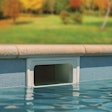
Signed into law on Dec. 19, 2007, by President Bush, the Virginia Graeme Baker Pool and Spa Safety Act is aimed at reducing the number of drownings, suction entrapment deaths and injuries, by enhancing the safety of public and private pools. The pool environment is to be secured through layers of protection and programs to educate consumers and the industry as a whole on pool safety.
The U.S. Consumer Product Safety Commission (CPSC) is taking an inclusive approach in implementing the act by Dec. 19, 2008.
On March 14, the CPSC sent out a list serve mass e-mail to stakeholders nationwide to begin the process of informing the public about the Commission's interpretation of the act, as well as make for a smooth transition to get in compliance with the law by the deadline.
Getting On Board
"What we are doing is giving people some background on the act itself, but more importantly, we are sharing with people today the staff's technical interpretation of that requirement, the specific technical requirement as it relates to drain covers and anti-entrapment devices," says Scott Wolfson, deputy director of the CPSC's office of information and public affairs.Wolfson says CPSC's first step is to draft the organization's initial comments on the technical requirements of Sec. 1404 Federal Swimming Pool and Spa Drain Standard. The March e-mail to the stakeholders marks the CPSC's first public comment on the law and offers people a window of opportunity to comment on the Commission's findings. The important thing to note, says Wolfson, is this is just a draft.
"We have it as a draft because it is the initial interpretation by our staff. But we fairly would like to give any stakeholder in this country a chance to provide their thoughts and what the impact will be for them at the local level or the state level in terms of the pools and the pool construction that they have in their region versus another region.
"We want to take all that into account. And we think it's the most fair and open approach that we could take. It's really good government to give people every step of the way a chance to provide some input to the CPSC."
Wolfson says the CPSC will provide additional information about the voluntary grant program for states, which is a separate part of the act, as well as information on how the Commission will enforce and verify that pools are in compliance with the new standards, at a later date. The two initiatives, he says, go hand in hand.
"It's an evolving issue for us," says Wolfson. "We think what's critical right now is to establish the technical requirements for what constitutes a safe drain cover, safe anti-entrapment devices and installation of safe anti-entrapment devices, and then we want to build on that, making sure the standards and the technical requirements are in place.
"What that will do is give us a better sense as to what we can do at the enforcement level because yes, there are provisions there to give us authority, but we need to build upon that."
By launching the implementation of the act in stages, the CPSC staff can complete their interpretation and solicit comments in a proficient and effective manner.
With the Commission's first interpretation analysis focused on Sec. 1404, understanding how the act will affect manufacturers of drain covers is key, given that every pool must now be equipped with anti-entrapment devices or systems that comply with ASME/ANSI A112.19.8-2007 standards.
Cover-Ready
"The Act is pretty straightforward in the sense that what it mandates for public pools is the need for an ASME-compliant cover to be on all pools by Dec. 19, 2008," says Carvin DiGiovanni, APSP's senior director/technical and standards. "And right now, from what I understand, there are no ASME-compliant covers that meet that standard. However, the manufacturers are working very diligently and have promised the industry that they will have covers in place to meet the act by the fall."Such a task is daunting, says Steve Barnes, product manager of safety and compliance at Pentair Water Pool and Spa. "The important thing, from the manufacturer's perspective, is we have until Dec. 20, it is believed, based on one year from the enactment of the law to comply with this 2007 standard. The problem is that it also requires that all public pools be updated with these drain covers by the same date," he says.
"I believe the industry is going to have a lot of drain covers that will comply, but will they be available in time for the public pool world, your apartment complex, hotels, all of that, to get them installed? That's still the giant question mark."
In mid-March, the manufacturers hit a bump in the road, one that could affect the ongoing progress of the implementation process. The current testing requirements of the drain cover standard for UV light exposure requires drain covers to be tested for 750 hours at 158 degrees Fahrenheit - far too hot for any plastic cover.
"They were melting," says Barnes. "Everybody's were melting. And so we, as an industry, are caught in a Catch-22. We can't make covers to pass the standard, yet the law requires it."
The Commission and all those involved held an emergency meeting in March to readjust the UV testing requirements to meet a standard that could be achieved by the manufacturers. The addendum up for ballot reduces the temperature at which the covers are tested to 140 degrees Fahrenheit and changes the language to allow leeway in regard to some warping of the cover after being in contact with high heat.
"Because of products going into Arizona and Nevada, they get to 120 degrees air temperature. Stuff sitting in boxes and trucks and warehouses can get up to 140, so the new test does still test at high heat, even though the stuff is going underwater," says Barnes.
The current standard says the cover cannot warp due to the heat in the UV test, he says, noting that all plastics warp as a general rule. Consider a plastic lid going through a dishwasher. It will never regain its exact flatness, but it still works when it's snapped onto the container.
"The new language says warping in high heat is OK so long as the cover can be installed and then pass the hair- and body-entrapment tests," adds Barnes.
In the draft interpretation of the act sent out on March 14, the CPSC addresses the addendum moving forward through the ASME/ANSI ballot process to correct the errors in the test method for UV light exposure. According to Barnes, the voting period ends on April 3. If the vote is unanimous at that point, manufacturers can proceed in making drains that pass the amended test. However, if it is not a unanimous vote, rather than going through the current expedited process, the addendum could have to go through the full voting process, which could take at least six months. All the while, the clock is ticking on the compliance date.
Passing the addendum for the new UV test standards isn't the only concern facing drain cover manufacturers. Barnes draws specific attention to the fact that the new standard also addresses how drain covers are fastened down, noting a widely publisized Minneapolis evisceration case.
"The original screws were lost and the golf service guy replaced it with drywall screws," says Barnes. "Just plain old steel screws. The cover was approved. The design of it was up to code when it was built, but it wasn't maintained."
Barnes says the issue concerning manufacturers is that people will buy the ASME/ANSI-compliant covers but will put them on old, previously installed drains that do not meet the standard.
"You can have the world's greatest [cover]," says Barnes, "but there is nothing that prevents pool installers from taking a very good cover and putting it on using screws that don't match the existing ring, or that old ring is cracked and brittle because it's 20 years old. There is nothing that says they have got to replace that ring."
The biggest fear for manufacturers, says Barnes, is that the act excludes language about how covers need to be installed. "When somebody gets hurt, not if, but when somebody gets hurt because a cover is not broken now but missing, guess who gets sued?"
In order to keep up with the impending December deadline, Barnes says Pentair has been moving forward on two paths: It is designing covers for the high temperatures already approved, in addition to designing covers with the assumption that the new addendum will pass. He says the two covers offer varying degrees of reliability.
"If you design for the very high temperatures, you have to use very hard plastics so they don't melt. They are not as strong. They are brittle like glass relative to [covers that pass] the other test, but they hold their shape very well," says Barnes. He describes the plastic that passes the new test as more flexible and rubbery and better at holding water.
No matter how the decision turns out, all covers will be stamped with an insignia to designate that they are ASME/ANSI approved. Buyers can look for one of two different markings required by the standard and federal act; one will have a logo while the other will have "ASME A112.19.8-2007" engraved on it, in addition to flow rates, manufacturer name, testing lab and life span.
Although it is uncertain how the CPSC will ensure that all pools abide by these standards at this time, Barnes says no matter which marking the cover contains, it must be visible during the time the drain is assembled. He understands that it may not be visible under water, an issue the APSP considers a challenge.
"How will code officials or the enforcement bodies know indeed that there is an ASME-compliant cover at the bottom of the pool, short of putting on scuba gear, jumping in the pool and checking it?" asks DiGiovanni. "If we are going to enforce this thing, that's one thing, but how do we know that there is a cover that meets the ASME standards down there?"
Wolfson reiterates that it's still too early to comment on certain specifics at this time, drawing attention to the need to solidify one thing at a time.
In The Know
The APSP has spent the last several months keeping up with the developments around the act. Be it through the APSP's weekly e-newsletter, Industry Currents, or through postings on its Web site, the association maintains the responsibility of keeping the industry informed."What we want to do is immediately support what the CPSC says in getting the message out to the industry, as well as pool and spa users," says DiGiovanni, "because the bottom rung is to make sure we protect the public. They are the last ones to perhaps know about this stuff when it comes to public pools, so we have to do as much as we can to make sure the facilities that public patrons visit are safe."
DiGiovanni stresses that the only solution to the problem for all five suction entrapment hazards (hair, limb, body suction, evisceration and mechanical) is the drain cover. Once the cover is removed, there is nothing present to protect against all five hazards. The APSP constantly reiterates that, should a cover go missing or get broken, the pool needs to immediately be closed until the cover is replaced.
"What we are concerned about is if you've got a device on the pool and the cover seems to be missing, and the operator of the pool says, 'Well, no problem. We'll get this done in a couple of months because we do have a backup device,'" says DiGiovanni. "That's the wrong attitude because you are still not protected against all five suction entrapments."
Protecting against all five suction entrapments is the ultimate goal, says DiGiovanni. The APSP continues to raise awareness and embed that into the industry's thought process in an effort to make the general public so aware of the new act that it becomes second nature for pool-goers to take the initiative and ask their local facility if it is updated with the latest safety features and requirements.
Going From Here
While the impact of this legislation is yet to be seen, it undoubtedly has offered a means to make the industry safer than before."It's like everything else, it's the law," says DiGiovanni. "And no matter how we feel about it, you don't want to be in violation of the law. But you've got to set a benchmark that needs to be achieved. You've got to set the goal. And that's what the law has."
The precise way the CPSC and the industry in general approaches the act will determine how effective this legislation will be. The everyday people who visit a community pool or pool facility want to be safe, and they go in there thinking they are. That is their right, says DiGiovanni.
"We're taking the high road as an association to do what we can above and beyond altering our industry to go out to as many other outside groups that have pools and spas."











































